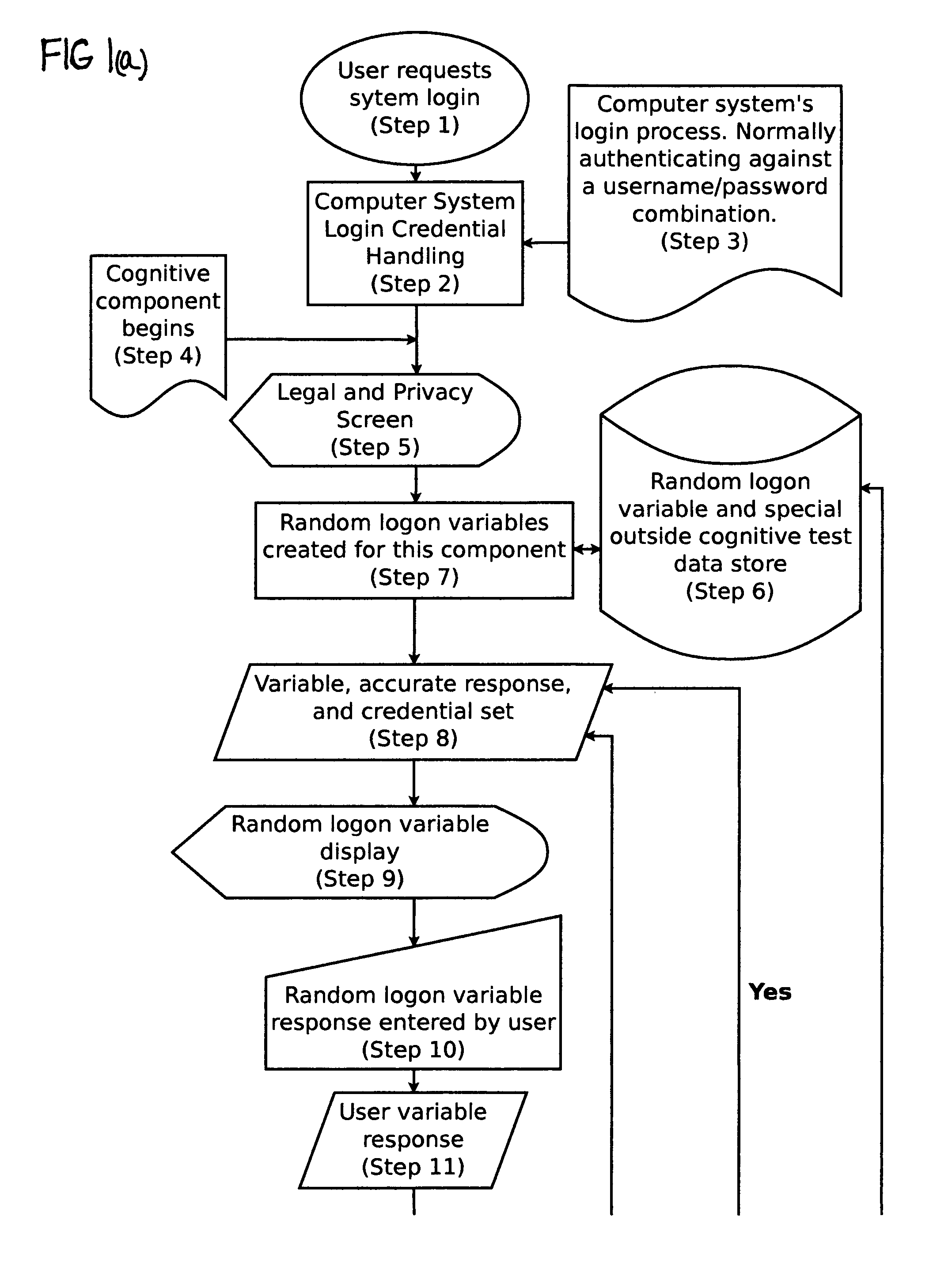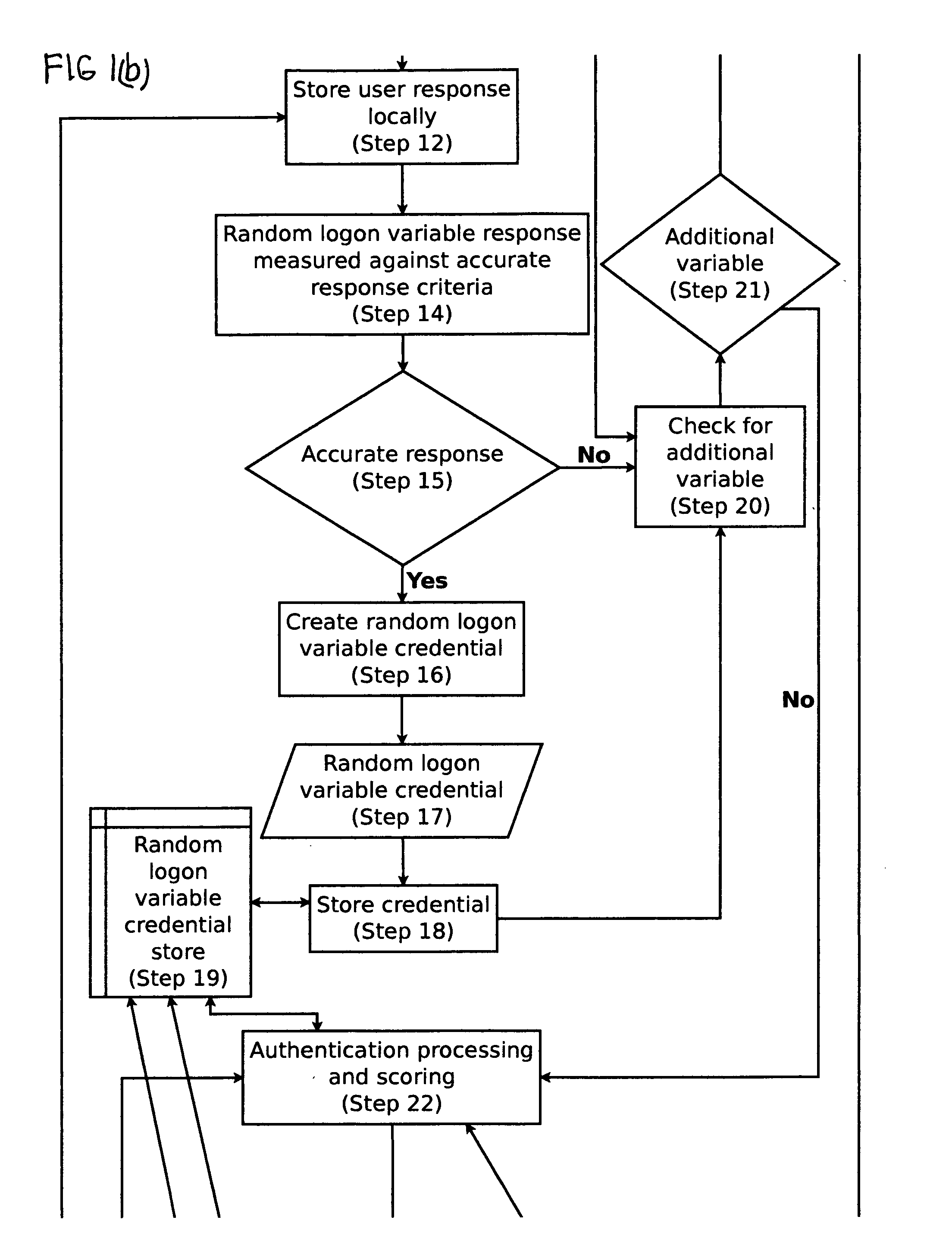Cognitive-based loon process for computing device
a computing device and cognition-based technology, applied in the field of user authentication and authorization, can solve the problems of insufficient verification of user identity, read-only access, computer system susceptible to unauthorized access, etc., and achieve the effect of accurate respons
- Summary
- Abstract
- Description
- Claims
- Application Information
AI Technical Summary
Benefits of technology
Problems solved by technology
Method used
Image
Examples
Embodiment Construction
[0020]Objects, technical solutions, and advantages of the invention will be easily understood by reference to the following description of embodiments when read in conjunction with the accompanying drawings.
[0021]The following terms are necessary to further understand these embodiments:
[0022]“Accurate” means an exactly correct response or a response deviating only slightly or within acceptable limits from the exactly correct response (or, if there are multiple exactly correct responses, then one such response), or any response given depending on which application is being used. In other words, it means the accurate, correct, or acceptable response to a random cognitive logon variable or outside cognitive variable. Variables are designed to be evaluated in broad general terms (e.g., a math variable) and then evaluated in more detail through another process that breaks down the variable by the cognitive skills needed to answer that variable, allowing for the measurement of a broad ran...
PUM
 Login to View More
Login to View More Abstract
Description
Claims
Application Information
 Login to View More
Login to View More - R&D
- Intellectual Property
- Life Sciences
- Materials
- Tech Scout
- Unparalleled Data Quality
- Higher Quality Content
- 60% Fewer Hallucinations
Browse by: Latest US Patents, China's latest patents, Technical Efficacy Thesaurus, Application Domain, Technology Topic, Popular Technical Reports.
© 2025 PatSnap. All rights reserved.Legal|Privacy policy|Modern Slavery Act Transparency Statement|Sitemap|About US| Contact US: help@patsnap.com



